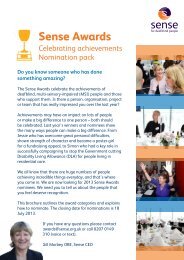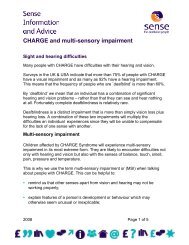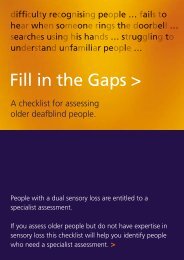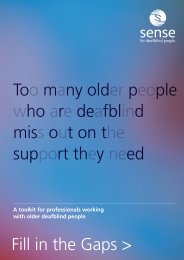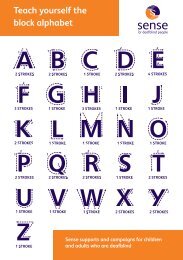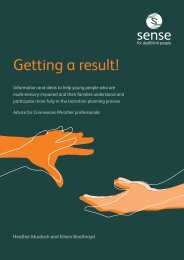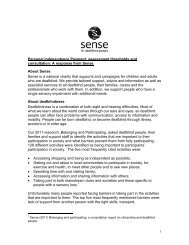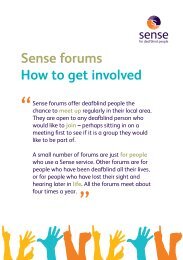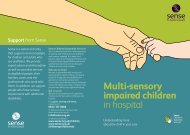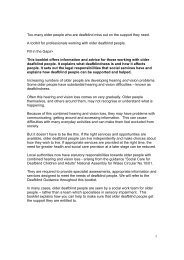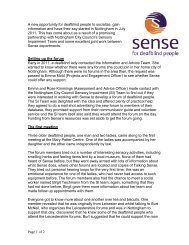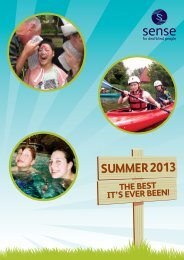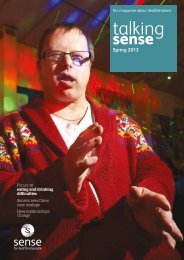MSI Unit Curriculum - Sense
MSI Unit Curriculum - Sense
MSI Unit Curriculum - Sense
Create successful ePaper yourself
Turn your PDF publications into a flip-book with our unique Google optimized e-Paper software.
<strong>MSI</strong> <strong>Unit</strong> <strong>Curriculum</strong>: Phase 2Staff sometimes delay steps within very familiar routines, to give pupils theopportunity to anticipate and act on their anticipation.Pupils are encouraged to choose the sequence of some activities (for example,sips of drink and food items at snack time, or pieces of equipment used in a PEsession).Pupils continue to have designated spaces within the classroom, but (dependingon their sensory and emotional capabilities) the boundaries of a space maynot be defined by physical ‘walls’. (For example, a rug which a pupil likes maybe used, or a large basket of favourite toys.) The items in a space will vary overtime with the time with the pupil’s preferences, but will not change frequently orrandomly.Staff support pupils in linking people, activities and places (for example, theswimming teacher – swimming – the pool; the taxi escort – going home – thetaxi). Cues are used and pupils are given time to process where they are and whothey are with before beginning an activity.Pupils begin to attend sessions in classrooms other than their own (for example,specialist teaching rooms for lessons such as science). They are supported byfamiliar keyworkers.Pupils use a range of school environments for individual work with keyworkers,including the school grounds. Photos, symbols or other signifiers are used toindicate these places. A matching signifier is attached to the entrance to indoorenvironments where appropriate.Orientation, movement and mobilityPupils are able to orientate themselves within their teaching base andrespond to landmarks on familiar routes.They explore their environment with support from a keyworker, using a rangeof idiosyncratic exploratory strategies. Lack of confidence in exploring newareas is a significant issue for pupils.Each pupil’s daily programme includes several sessions where movementbetween activities is a ‘learning journey’. Additional time is given to theseopportunities to enable pupils to move at an appropriately slow pace.Staff identify and introduce to pupils the learning journey landmarks which,knowing the pupil, they are most able and likely to relate to. Such landmarkswill usually be explored using only one sense at a time. As pupils become morefamiliar with the landmarks, staff pause at appropriate points in the journey togive pupils the opportunity spontaneously to orientate themselves.47



